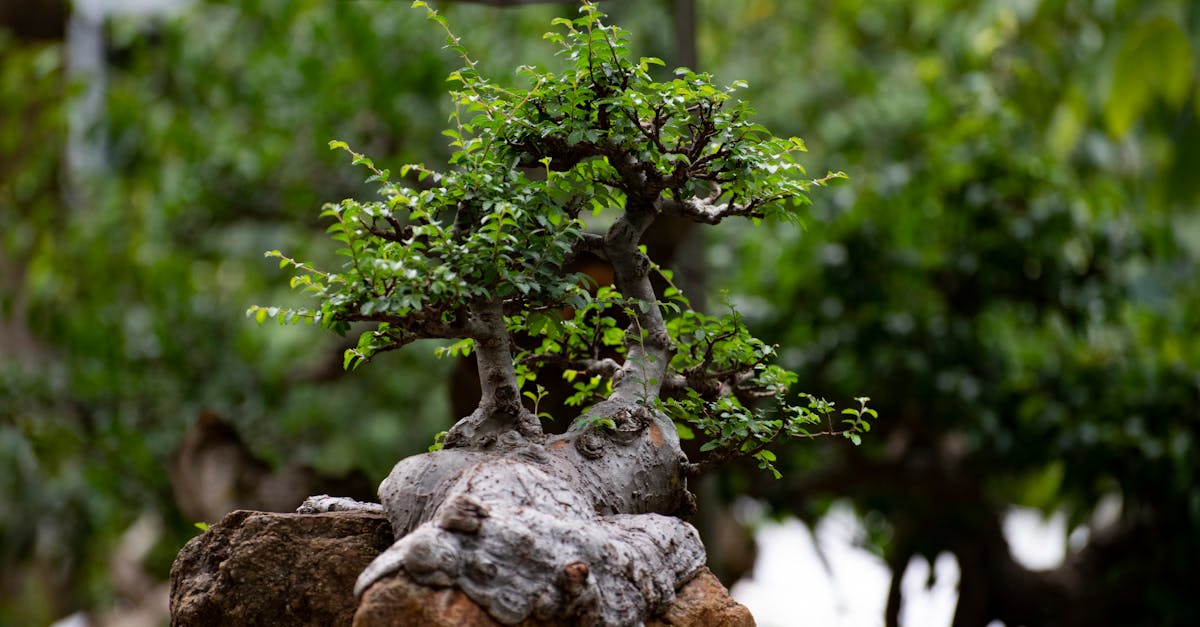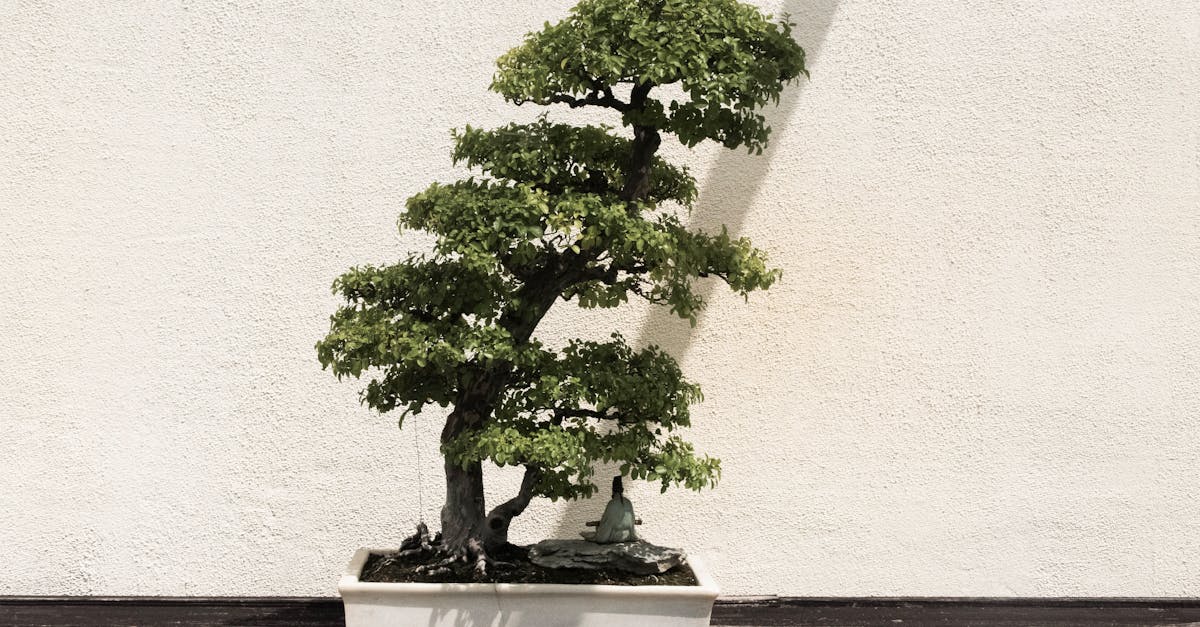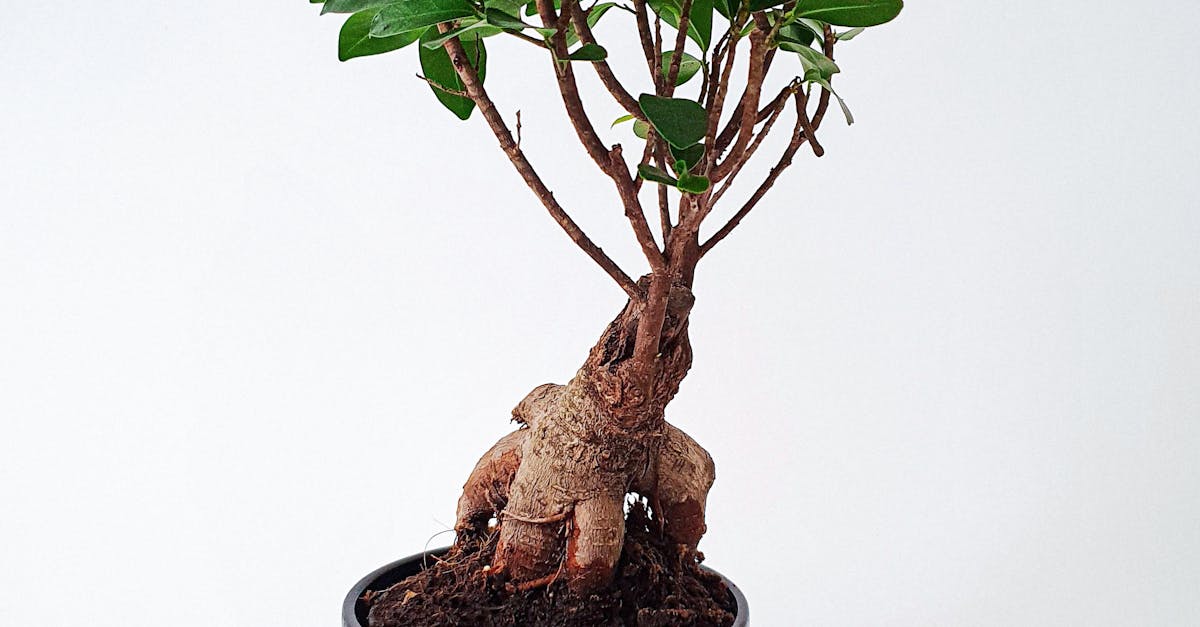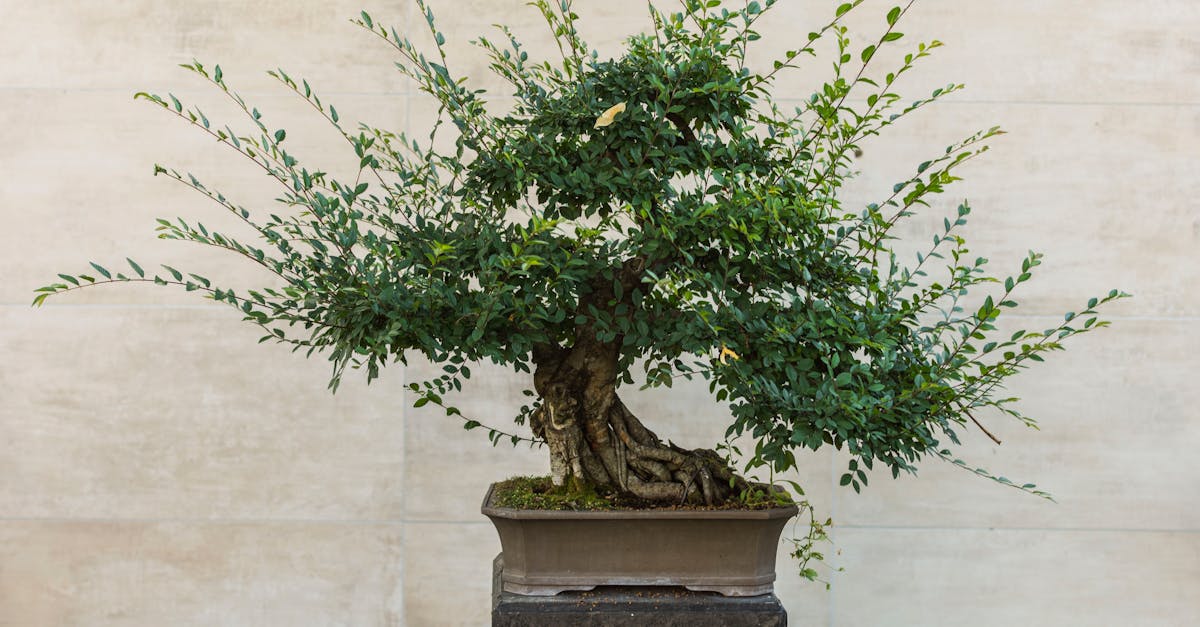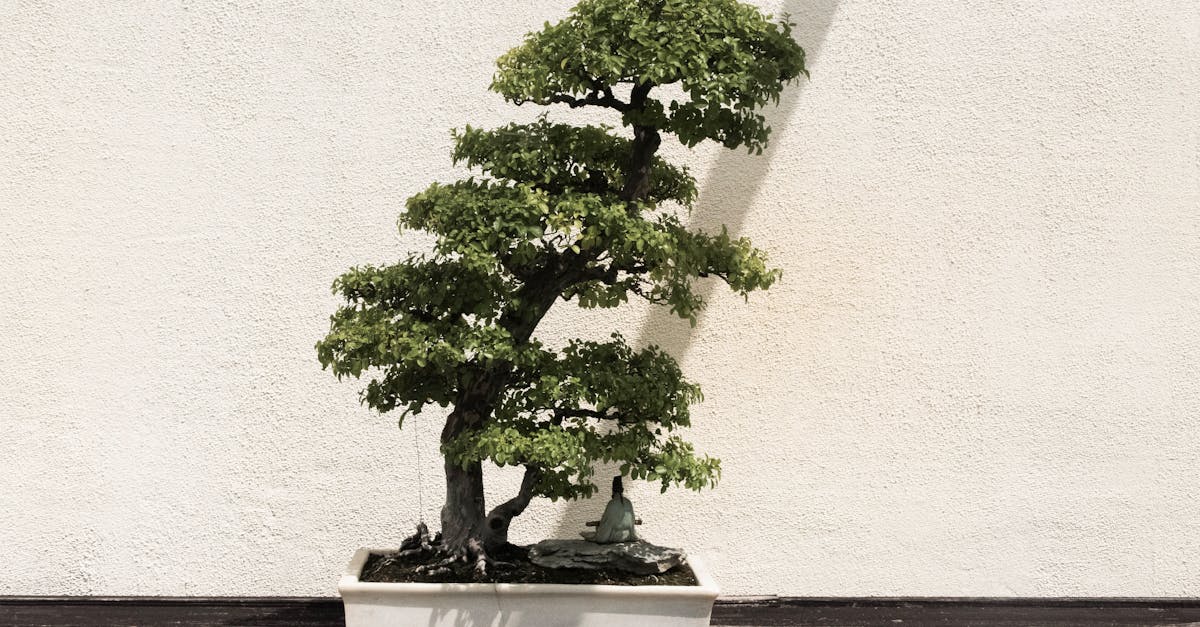A Comprehensive Guide to Choosing, Styling, and Caring for Bonsai Stands
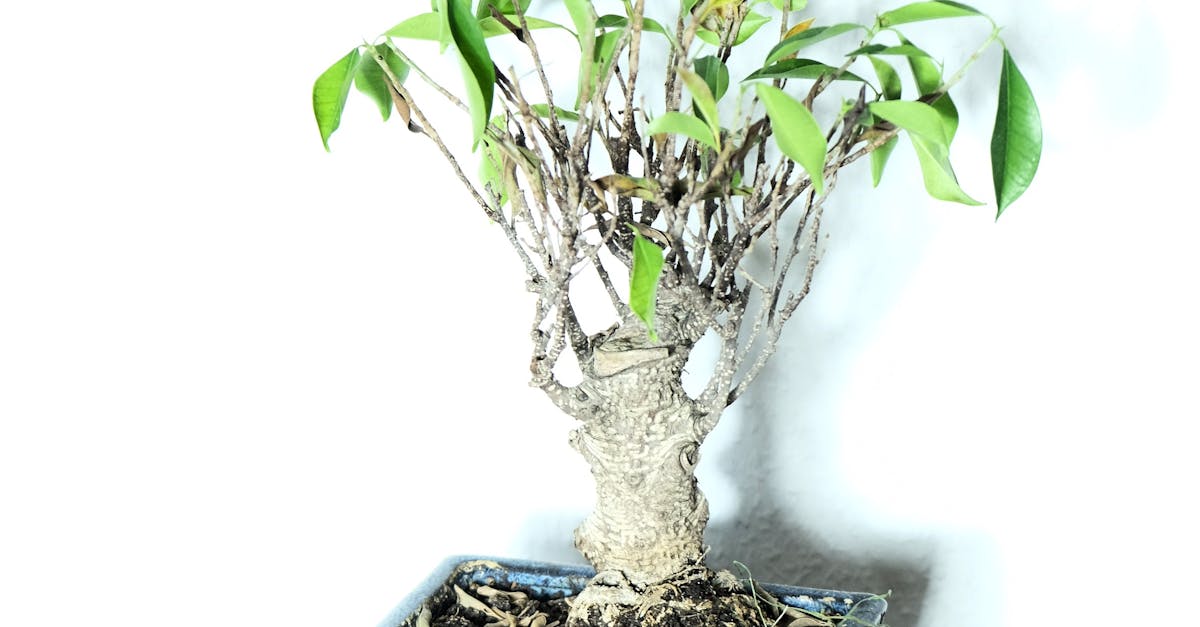
Bonsai Stands: The Art of Display
Bonsai stands are an essential element in the art of bonsai, providing support, stability, and a platform to showcase the beauty of these miniature trees. Choosing the right stand can complement the size, style, and species of your bonsai, elevating its presentation and enhancing your overall experience. This guide will delve into the world of bonsai stands, exploring different materials, designs, and considerations for creating a harmonious display that will bring life and elegance to your space.
From traditional Japanese-style stands to contemporary designs, there is a wide range of options available to suit your aesthetic preferences and the specific needs of your bonsai. Whether you prefer the rustic charm of wood or the sleek elegance of ceramics, understanding the pros and cons of different materials will help you make an informed choice. Additionally, the size and proportions of the stand should be carefully considered to create a balanced and visually pleasing arrangement.
Beyond the selection and styling of the stand, proper care and maintenance are crucial to preserve its longevity and beauty. Regular cleaning, protection from elements, and occasional repairs will ensure that your bonsai stand remains a cherished part of your bonsai display, showcasing your miniature trees in their full glory.
1. Choosing the Right Bonsai Stand
Choosing the Right Bonsai Stand
Selecting the right bonsai stand is essential to complement the size, style, and species of your bonsai. A well-chosen stand will provide support and stability, while also enhancing the overall presentation of your miniature tree. Here are some factors to consider when choosing a bonsai stand:
Materials: Bonsai stands are available in a variety of materials, including wood, ceramic, and metal. Each material has its own advantages and disadvantages. Wood stands are durable and can be stained or painted to match the decor of your home. Ceramic stands are elegant and can add a touch of sophistication to your display. Metal stands are lightweight and easy to move, but they can be more prone to rust. Ultimately, the best material for your bonsai stand will depend on your personal preferences and the specific needs of your tree.
Design: Bonsai stands come in a variety of designs, from traditional Japanese-style stands to more contemporary designs. Traditional stands are typically made of wood and feature a simple, understated design. Contemporary stands can be made from a variety of materials and often feature more elaborate designs. When choosing a stand, it is important to consider the style of your bonsai and the overall look you want to achieve. You should also consider the size of your bonsai and choose a stand that is large enough to provide adequate support. A well-chosen bonsai stand will not only protect your tree but also enhance its beauty and make it a focal point of your home.
Materials for Bonsai Stands
Materials for Bonsai Stands
Bonsai stands are available in a variety of materials, each with its own advantages and disadvantages. Here is a brief overview of the most common materials used for bonsai stands:
Wood: Wood is a popular choice for bonsai stands due to its durability and natural beauty. Wood stands can be stained or painted to match the decor of your home or garden, and they can be carved into intricate designs. However, wood stands can be heavy and difficult to move, and they can be susceptible to rot and decay if not properly sealed. Some popular types of wood used for bonsai stands include rosewood, mahogany, and teak.
Ceramic: Ceramic stands are another popular choice for bonsai stands. Ceramic stands are elegant and easy to clean, and they are not susceptible to rot or decay. However, ceramic stands can be fragile and easily broken if dropped. Some popular types of ceramic used for bonsai stands include porcelain, stoneware, and earthenware.
Metal: Metal stands are lightweight and easy to move, and they are not susceptible to rot or decay. However, metal stands can be prone to rust if not properly coated. Some popular types of metal used for bonsai stands include aluminum, iron, and steel. Ultimately, the best material for your bonsai stand will depend on your personal preferences and the specific needs of your tree. Consider the size and weight of your bonsai, as well as the climate in which you will be displaying it. With proper care and maintenance, any of these materials can provide a beautiful and durable stand for your bonsai.
Traditional vs. Modern Stands
Traditional vs. Modern Stands
When choosing a bonsai stand, it is important to consider the aesthetics of your bonsai and the overall look you want to achieve. Traditional Japanese-style stands are typically made of wood and feature a simple, understated design. Contemporary stands can be made from a variety of materials and often feature more elaborate designs. Here is a brief overview of the two main types of bonsai stands:
Traditional Japanese-Style Stands: Traditional Japanese-style stands are designed to complement the natural beauty of bonsai trees. These stands are typically made of wood and feature a simple, understated design. Traditional stands often have a dark finish and may be decorated with carvings or other embellishments. Japanese-style stands are a good choice for bonsai trees that are displayed in a traditional setting.
Contemporary Stands: Contemporary bonsai stands offer a more modern take on the traditional stand. These stands can be made from a variety of materials, including wood, metal, and ceramic. Contemporary stands often feature more elaborate designs and may incorporate elements of modern art. Contemporary stands are a good choice for bonsai trees that are displayed in a modern setting. Ultimately, the best type of stand for your bonsai will depend on your personal preferences and the specific needs of your tree. Consider the size and style of your bonsai, as well as the overall look you want to achieve.
Sizing and Proportions
Sizing and Proportions
When choosing a bonsai stand, it is important to consider the size and proportions of your bonsai tree. The stand should be large enough to provide adequate support for the tree, but it should not be so large that it overwhelms the tree. A good rule of thumb is to choose a stand that is about two-thirds the width of the tree’s canopy. The height of the stand should be about one-third to one-half the height of the tree. Here are some additional tips for choosing the right size and proportions for your bonsai stand:
-
Consider the overall shape of your tree. A tall, narrow tree will look best on a tall, narrow stand. A short, wide tree will look best on a short, wide stand.
-
Consider the size of the tree’s root ball. The stand should be large enough to accommodate the root ball without being too large. A stand that is too large can make the tree look top-heavy.
-
Consider the weight of the tree. A heavy tree will need a sturdy stand. A lightweight tree can be displayed on a more delicate stand.
By following these tips, you can choose a bonsai stand that will complement the size and proportions of your tree and create a harmonious display.
2. Styling Your Bonsai Display

Styling Your Bonsai Display
Once you have chosen the perfect bonsai stand, it is time to start styling your display. Here are a few tips to help you create a beautiful and harmonious arrangement:
-
Choose the right location. The location of your bonsai display is important. You want to choose a spot where the tree will receive plenty of light and where it will be protected from the elements. You should also consider the overall look of the display. A bonsai tree can be a beautiful addition to a living room, dining room, or office.
-
Use accessories. Accessories can help to enhance the presentation of your bonsai tree. A few well-chosen accessories can add interest and depth to your display. Some popular accessories include scrolls, suiseki stones, and miniature figurines. When choosing accessories, it is important to keep the overall style of your display in mind. You want to choose accessories that complement the tree and the stand.
-
Attention to detail. The little details can make a big difference in the overall presentation of your bonsai display. Make sure to keep the stand clean and free of debris. You should also water your tree regularly and fertilize it according to the manufacturer’s instructions. By paying attention to the details, you can create a beautiful and healthy bonsai display that will bring you years of enjoyment.
Choosing the Optimal Location
Choosing the Optimal Location
When choosing the perfect spot for your bonsai display, there are a few factors to consider, including light conditions, temperature, and accessibility for viewing.
Light conditions: Bonsai trees need plenty of light to thrive. However, direct sunlight can be too harsh for some trees. If you are placing your bonsai tree in a sunny spot, be sure to provide some shade during the hottest part of the day. You can also use a grow light to supplement natural light.
Temperature: Bonsai trees prefer warm temperatures, but they can tolerate a wide range of temperatures. However, it is important to avoid exposing your tree to extreme temperatures. If you are placing your bonsai tree outdoors, be sure to bring it inside during the winter months.
Accessibility for viewing: You should also consider accessibility when choosing a location for your bonsai display. You want to choose a spot where you can easily view and enjoy your tree. You may also want to consider the overall look of the display. A bonsai tree can be a beautiful addition to a living room, dining room, or office.
Accessorizing with Harmony
Accessorizing with Harmony
Accessories can help to enhance the visual appeal of your bonsai display and create a cohesive ambiance. However, it is important to choose accessories that complement the tree and the stand. A few well-chosen accessories can add interest and depth to your display. Here are a few tips for accessorizing your bonsai display:
-
Use natural materials. Natural materials, such as wood, stone, and bamboo, can help to create a sense of harmony between your bonsai tree and its surroundings. Natural materials can also help to create a more natural and authentic look.
-
Choose accessories that are in scale with your tree. The accessories you choose should be in scale with your bonsai tree. Small accessories can get lost on a large tree, while large accessories can overwhelm a small tree. It is also important to consider the height and width of your accessories. You want to choose accessories that will not block the view of your tree.
-
Use accessories to create a focal point. Accessories can be used to create a focal point in your bonsai display. A well-placed scroll, suiseki stone, or miniature figurine can draw the eye to your tree and make it the center of attention.
Attention to Detail
Attention to Detail
The little details can make a big difference in the overall presentation of your bonsai display. Here are a few tips to help you elevate your display by paying meticulous attention to detail:
-
Keep the stand clean. A clean stand will help to showcase your bonsai tree and create a more polished look. You can clean the stand with a soft cloth and a mild detergent. Be sure to dry the stand thoroughly after cleaning.
-
Water your tree regularly. Bonsai trees need regular watering to stay healthy. The frequency of watering will vary depending on the type of tree, the size of the pot, and the climate. It is important to water your tree deeply and evenly. Avoid overwatering, as this can damage the roots.
-
Fertilize your tree according to the manufacturer’s instructions. Bonsai trees need fertilizer to stay healthy and grow strong. You can use a balanced fertilizer that is specifically designed for bonsai trees. Be sure to follow the manufacturer’s instructions for application.
-
Prune your tree regularly. Pruning is essential for maintaining the shape and size of your bonsai tree. You can prune your tree using sharp scissors or pruning shears. Be sure to make clean cuts and to remove any dead or diseased branches.
3. Caring for Your Bonsai Stand
Caring for Your Bonsai Stand
With proper care and maintenance, your bonsai stand can last for many years. Here are a few tips to help you preserve the longevity and beauty of your stand:
-
Clean your stand regularly. A clean stand will help to prevent the buildup of dirt and debris, which can damage the finish. You can clean your stand with a soft cloth and a mild detergent. Be sure to dry the stand thoroughly after cleaning.
-
Protect your stand from the elements. If you are placing your bonsai stand outdoors, be sure to protect it from the elements. You can do this by covering the stand with a tarp or by placing it in a sheltered area. Extreme temperatures and moisture can damage the finish of your stand.
-
Inspect your stand regularly. Inspect your stand regularly for any signs of damage. If you find any damage, be sure to repair it promptly. This will help to prevent further damage and extend the life of your stand.
Cleaning and Maintenance
Cleaning and Maintenance
Regular cleaning and maintenance are essential to ensure the durability of your bonsai stand and prevent damage. The specific cleaning and maintenance techniques will vary depending on the material of your stand. Here are a few general tips:
-
Wood stands: Wood stands can be cleaned with a soft cloth and a mild detergent. Be sure to dry the stand thoroughly after cleaning. You can also apply a coat of furniture wax or polish to help protect the finish.
-
Ceramic stands: Ceramic stands can be cleaned with a soft cloth and a mild detergent. Be sure to rinse the stand thoroughly after cleaning. You can also apply a coat of clear glaze to help protect the finish.
-
Metal stands: Metal stands can be cleaned with a soft cloth and a mild detergent. Be sure to dry the stand thoroughly after cleaning. You can also apply a coat of metal polish to help protect the finish.
Protecting from Elements
Protecting from Elements
Protecting your bonsai stand from moisture, sunlight, and extreme temperatures is essential to preserve its condition and prevent fading or warping. Here are a few tips:
-
Moisture: Moisture can damage the finish of your bonsai stand and cause it to rot. To protect your stand from moisture, be sure to keep it in a dry place. You can also apply a coat of sealant to help protect the finish.
-
Sunlight: Sunlight can fade the finish of your bonsai stand and cause it to warp. To protect your stand from sunlight, be sure to place it in a shaded area. You can also apply a coat of UV protectant to help protect the finish.
-
Extreme temperatures: Extreme temperatures can damage the finish of your bonsai stand and cause it to crack. To protect your stand from extreme temperatures, be sure to keep it in a temperature-controlled environment. You can also apply a coat of heat-resistant paint to help protect the finish.
Restoration and Repair
Restoration and Repair
Minor repairs and restoration techniques can help to preserve the aesthetic appeal of your bonsai stand and extend its lifespan. Here are a few tips:
-
Scratches: Scratches can be repaired using a variety of methods, depending on the severity of the scratch. For minor scratches, you can use a soft cloth and a mild abrasive cleaner to buff out the scratch. For deeper scratches, you may need to use a wood filler or a touch-up paint. Prior to any scratch repair on wood stands, always test the repair method in an inconspicuous area.
-
Dents: Dents can be repaired using a variety of methods, depending on the size and depth of the dent. For small dents, you can use a soft cloth and a hammer to gently tap out the dent. For larger dents, you may need to use a wood filler or a heat gun. Prior to any dent repair on wood stands, always test the repair method in an inconspicuous area.
-
Other damage: Other types of damage, such as cracks or breaks, may require more extensive repairs. In some cases, you may be able to repair the damage yourself using wood glue or epoxy. However, for more severe damage, it is best to consult with a professional.
4. Bonsai Stands for Different Tree Species

Bonsai Stands for Different Tree Species
Different bonsai species have different characteristics and requirements. As such, there are specialized bonsai stands designed to accommodate the unique needs of each species. Here are a few examples:
-
Juniper and Pine Bonsai Stands: Juniper and pine bonsai trees are known for their strength and resilience. They are often displayed on robust stands made of durable materials, such as wood or metal. These stands provide ample support for the tree and help to showcase its rugged beauty.
-
Deciduous Bonsai Stands: Deciduous bonsai trees are known for their delicate leaves and graceful branches. They are often displayed on stands made of lighter materials, such as bamboo or ceramic. These stands provide support for the tree without overwhelming its delicate features.
-
Tropical Bonsai Stands: Tropical bonsai trees require special care and attention. They are often displayed on stands that provide good drainage and aeration. These stands may be made of materials such as plastic or cork, which help to prevent the roots from rotting.
Juniper and Pine Bonsai Stands
Juniper and Pine Bonsai Stands
Juniper and pine bonsai trees are known for their strength and resilience. They are often displayed on robust stands made of durable materials, such as wood or metal. These stands provide ample support for the tree and help to showcase its rugged beauty.
When choosing a bonsai stand for a juniper or pine tree, it is important to consider the size and weight of the tree. The stand should be large enough to provide adequate support for the tree, but it should not be so large that it overwhelms the tree. The stand should also be made of a durable material that can withstand the weight of the tree and the elements.
Some popular materials for juniper and pine bonsai stands include:
-
Wood: Wood is a classic choice for bonsai stands. It is strong and durable, and it can be stained or painted to match the decor of your home. Popular wood choices for bonsai stands include rosewood, mahogany, and teak.
-
Metal: Metal is another popular choice for bonsai stands. It is strong and durable, and it is not susceptible to rot or decay. Popular metal choices for bonsai stands include aluminum, iron, and steel.
Deciduous Bonsai Stands
Deciduous Bonsai Stands
Deciduous bonsai trees are known for their delicate leaves and graceful branches. They are often displayed on stands made of lighter materials, such as bamboo or ceramic. These stands provide support for the tree without overwhelming its delicate features.
When choosing a bonsai stand for a deciduous tree, it is important to consider the size and weight of the tree. The stand should be large enough to provide adequate support for the tree, but it should not be so large that it overwhelms the tree. The stand should also be made of a material that can withstand the weight of the tree and the elements.
Some popular materials for deciduous bonsai stands include:
-
Bamboo: Bamboo is a lightweight and durable material that is perfect for deciduous bonsai stands. It is strong enough to support the weight of the tree, but it is not too heavy or bulky. Bamboo stands are also available in a variety of styles, so you can find one that matches the decor of your home.
-
Ceramic: Ceramic is another popular choice for deciduous bonsai stands. Ceramic stands are elegant and durable, and they can be glazed in a variety of colors to match the decor of your home. Ceramic stands are also relatively heavy, which can help to provide stability for the tree.
Tropical Bonsai Stands
Tropical Bonsai Stands
Tropical bonsai trees require special care and attention. They are often displayed on stands that provide good drainage and aeration. These stands may be made of materials such as plastic or cork, which help to prevent the roots from rotting.
When choosing a bonsai stand for a tropical tree, it is important to consider the size and weight of the tree. The stand should be large enough to provide adequate support for the tree, but it should not be so large that it overwhelms the tree. The stand should also be made of a material that can withstand the weight of the tree and the elements.
Some popular materials for tropical bonsai stands include:
-
Plastic: Plastic is a lightweight and durable material that is perfect for tropical bonsai stands. It is strong enough to support the weight of the tree, but it is not too heavy or bulky. Plastic stands are also available in a variety of styles, so you can find one that matches the decor of your home.
-
Cork: Cork is another popular choice for tropical bonsai stands. Cork is a natural material that is lightweight and porous. It provides good drainage and aeration for the roots, and it is also resistant to rot and decay.
5. Inspiration and Showcase
Inspiration and Showcase
Explore a gallery of stunning bonsai displays and stands to draw inspiration from creative arrangements and innovative techniques. Here are a few examples to get you started:
-
Traditional Japanese Bonsai Stands: Traditional Japanese bonsai stands are known for their simplicity and elegance. They are often made of wood and feature a dark finish. Traditional stands are a good choice for bonsai trees that are displayed in a traditional setting.
-
Contemporary Bonsai Stands: Contemporary bonsai stands offer a more modern take on the traditional stand. These stands can be made from a variety of materials, including wood, metal, and ceramic. Contemporary stands often feature more elaborate designs and may incorporate elements of modern art. Contemporary stands are a good choice for bonsai trees that are displayed in a modern setting.
-
Outdoor Bonsai Gardens: Bonsai trees can also be displayed in outdoor gardens. Outdoor bonsai gardens provide a natural setting for bonsai trees and can be a beautiful addition to any home. When creating an outdoor bonsai garden, it is important to choose stands that are made of durable materials and that can withstand the elements.
Traditional Japanese Bonsai Stands
Traditional Japanese Bonsai Stands
Traditional Japanese bonsai stands are known for their simplicity, elegance, and balance. They are typically made of wood and feature a dark finish. Traditional stands are a good choice for bonsai trees that are displayed in a traditional setting.
One of the most common types of traditional Japanese bonsai stands is the daiza. Daiza stands are typically made of hardwood, such as rosewood or mahogany. They have a simple, rectangular shape and feature a slightly raised platform. The platform is used to support the bonsai pot and to provide drainage for the tree. Daiza stands are often used for large, mature bonsai trees.
Another popular type of traditional Japanese bonsai stand is the shohin. Shohin stands are smaller than daiza stands and are used for smaller bonsai trees. Shohin stands are typically made of lighter woods, such as cherry or maple. They have a more delicate design than daiza stands and often feature intricate carvings or inlays. Shohin stands are a good choice for small, young bonsai trees.
Contemporary Bonsai Stands
Contemporary Bonsai Stands
Contemporary bonsai stands offer a more modern take on the traditional stand. They can be made from a variety of materials, including wood, metal, and ceramic. Contemporary stands often feature more elaborate designs and may incorporate elements of modern art.
One of the most popular types of contemporary bonsai stands is the sculptural stand. Sculptural stands are made from a variety of materials, including wood, metal, and stone. They are often designed to resemble natural objects, such as rocks or trees. Sculptural stands are a good choice for bonsai trees that are displayed in a modern setting.
Another popular type of contemporary bonsai stand is the floating stand. Floating stands are made from a variety of materials, including acrylic and glass. They are designed to give the illusion that the bonsai tree is floating in the air. Floating stands are a good choice for small, delicate bonsai trees.
Outdoor Bonsai Gardens
Outdoor Bonsai Gardens
Bonsai trees can also be displayed in outdoor gardens. Outdoor bonsai gardens provide a natural setting for bonsai trees and can be a beautiful addition to any home. When creating an outdoor bonsai garden, it is important to choose stands that are made of durable materials and that can withstand the elements.
One popular way to display bonsai trees in an outdoor garden is to use natural elements. Natural elements, such as rocks and driftwood, can be used to create a realistic and natural setting for bonsai trees. Natural stands can also be used to provide support for bonsai trees and to help them to blend in with their surroundings.
Another popular way to display bonsai trees in an outdoor garden is to use creative stand arrangements. Creative stand arrangements can be used to create a unique and eye-catching display for bonsai trees. Creative stand arrangements can also be used to highlight the beauty of bonsai trees and to make them the focal point of the garden.
What are the different types of materials used for bonsai stands?
Bonsai stands can be made from a variety of materials, including wood, ceramic, metal, and plastic. Each material has its own advantages and disadvantages. Wood stands are durable and can be stained or painted to match the decor of your home. Ceramic stands are elegant and easy to clean. Metal stands are lightweight and easy to move. Plastic stands are lightweight and inexpensive.
How do I choose the right size stand for my bonsai tree?
The stand should be large enough to provide adequate support for the tree, but it should not be so large that it overwhelms the tree. A good rule of thumb is to choose a stand that is about two-thirds the width of the tree’s canopy.
How do I care for my bonsai stand?
Regular cleaning and maintenance are essential to ensure the durability of your bonsai stand and prevent damage. The specific cleaning and maintenance techniques will vary depending on the material of your stand. However, here are a few general tips:
-
Clean your stand regularly with a soft cloth and a mild detergent.
-
Protect your stand from the elements, such as moisture, sunlight, and extreme temperatures.
-
Inspect your stand regularly for any signs of damage. If you find any damage, be sure to repair it promptly.

